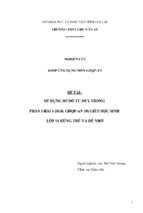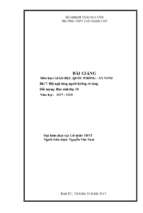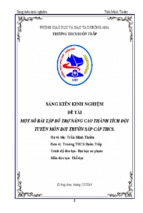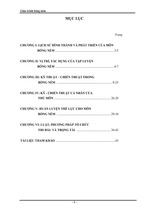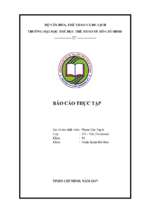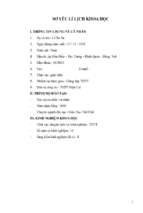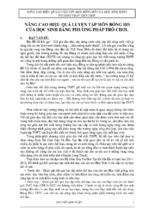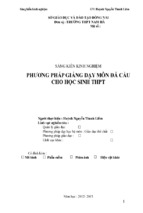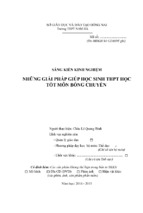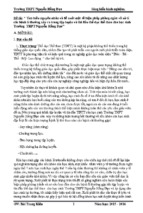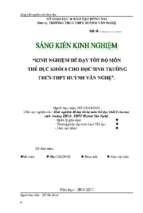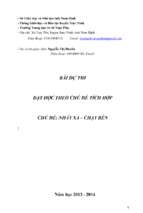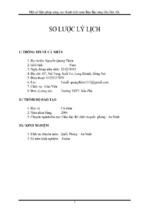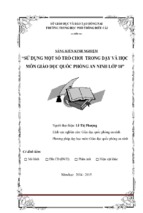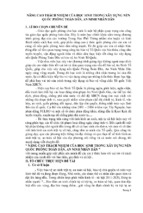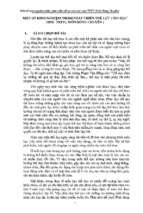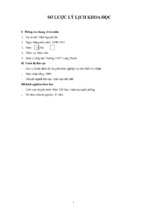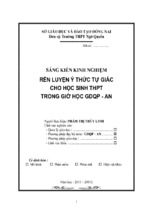A Chair for Yoga
A complete guide to Iyengar Yoga
practice with a chair
by
Eyal Shifroni, Ph.D.
Based on the teaching of
Yogacharya B.K.S. Iyengar,
Geeta S. Iyengar, and Prashant S. Iyengar
at the
Ramamani Iyengar Memorial Institute (RIMYI),
Pune, India.
Table of Contents
Acknowledgments and Gratitude . ........................................................................ vii
Introduction ........................................................................................................... ix
Chapter 1:
Standing Asanas - Utthitha Sthiti . ............................................. 1
Chapter 2:
Sitting Asanas - Upavistha Sthiti ................................................ 37
Chapter 3:
Forward Extensions – Paschima Pratana Sthiti ......................... 44
Chapter 4:
Twists –Parivritta Sthiti............................................................... 62
Chapter 5:
Inversions - Viparita Sthiti .......................................................... 79
Chapter 6:
Backward Extensions – Purva Pratana Sthiti ............................. 102
Chapter 7:
Abdominal Asanas – Udara Akunchana Sthiti............................ 145
Chapter 8:
Restorative –Visranta Karaka Sthiti............................................ 149
Chapter 9:
Final Words................................................................................... 154
Appendix:
A chair for all – a gentle practice sequence.................................. 155
v
Acknowledgments and Gratitude
The source of all the knowledge presented in this guide is my
Guru, Yogacharia B.K.S Iyengar, the founder of the Iyengar Yoga
method. The use of chairs in Yoga practice was introduced by
Mr. Iyenger along with many other tools that he invented and
adapted over the years. I wish to express my deep admiration
and gratitude for him not only as my personal teacher, but also
for making Yoga accessible to millions, enabling every person
to benefit from the gift of Yoga. I wish also to thank my Guru,
Mr. Iyengar, for devoting his precious time to reviewing the
manuscript and suggesting valuable corrections. His feedback improved this guide tremendously
and contributed to my confidence in publishing it.
My initial interest in writing this guide was kindled during visits to Pune, while practicing with a
chair under the guidance of Prashant Iyengar at RIMYI.
Geeta Iyengar's DVD: "The role of the chair in the yogi's life" ignited many of the ideas presented
in this guide.
I wish to thank these three great teachers for introducing me to the world of Iyengar Yoga and for
being a continuous source of knowledge and inspiration!
I also wish to thank many other teachers, most notably Faeq Biria, Birjoo Mehta and Jawahar
Bangera, who deepened and enriched my practice, with and without chairs.
Gratitude is also due to my students who helped test and develop new ideas involving the use of
chairs during classes and workshops. I hope that they enjoyed this process as much as me!
The writings of this guide have been a joint-project of all the teachers who teach with me at the center
in Zichron-Ya'akov (Israel). We all experimented and tried the chair-work with our students, and
each contributed his own ideas. I want to say thanks especially to:
Michael Sela who went through my writings over and over, with endless patience and edited the
text. He helped me to formulate this guide and to express my ideas more concisely and clearly.
Ravit Moar and Rachel Hasson who spent many hours modeling for the photos in this guide.
Kym Ben-Ya'akov for contributing her talents both as a Yoga teacher and as an American native
English-speaker, as well as for using her hawk-eye to check the English in this guide.
Thanks to Anat Scher for her willingness to model for the photos of the appendix. Special thanks
also to my student Ram Amit who volunteered to take the photos and who did such a dedicated and
wonderful job! Thanks also to my sweet daughter, Ayelet who took some of the photos and edited all
the photos to give them a final touch.
vii
And, last but not least, I want to thank my wife, Hagit. Without her love and support, this guide (and
many other things) could never have become real.
Photography: Ram Amit
Graphic Design: Einat Merimi | Studio A.N.A.
Text Editing: Michael Sela
viii
Introduction
This guide is a modest attempt to present how a chair can be used to deepen and enhance the practice
of Yogasasna. It was born out of the interest and enthusiasm expressed by my students during classes
and workshops in which we explored various ways to use chairs. They requested me to document this
work, so that they could continue to practice at home.
We hope that this presentation will help practitioners, students and teachers make systematic use
of chairs in their practice, thus helping to spread Iyengar Yoga for the benefit of all!
The Use of Props
B.K.S. Iyengar developed a variety of equipment and accessories that enable every person to improve
her/his asana practice and attain benefit from it. The main purposes of these "props" are to help the
practitioner:
—
—
—
—
Perform asanas which are difficult to perform independently;
Achieve and maintain correct alignment during the practice;
Stay longer and relax in challenging asanas, in order to attain their full benefit; and
Study and investigate the asanas to a greater depth.
Props are indeed an important characteristic of Iyengar Yoga, but they should not be confused
with its essence. Props are a means for achieving ends - such as alignment, stability, precision, and
prolonged stays in asanas.
This guide focuses on one such prop: chairs! It contains eight chapters, each dedicated to another
family of asanas, and an appendix "A chair for all – a gentle practice sequence".
The usages of the chair covered here, are intended to direct the awareness to different aspects of
the asanas and to different parts of the body, in order to deepen and enhance the understanding of
the asanas. Practitioners should be careful not to develop dependency on props; rather, props should
be employed intelligently in pursuit of a mature and mindful practice of asanas.
What Type of Chairs Should be Used?
The chair must be stable and sturdy and have a horizontal, square-shaped, flat seat at the appropriate
height (about 45 cm elevation from the floor). It is strongly recommended to use the folding metal
chairs used in RIMYI and other Iyengar centers. These chairs are typically equipped with two
horizontal supportive metal rungs, one welded between the front legs and the other between the
rear legs. The backs of those chairs should be removed, in order to expose the framing of the backrest
for ease of gripping and for enabling moving through it.
ix
Important Notes
1. This guide is not intended for people suffering from special health problems. If you suffer from a
severe health problem please seek guidance from a teacher who is certified to conduct therapeutic
Yoga classes.
2. This guide is not intended for newcomers, but for people who have already acquired some basic
knowledge and are familiar with the basic techniques of the presented asanas. For a complete
guide on the techniques of asanas, please refer to Light on Yoga by B.K.S Iyengar, or other sources
such as Yoga – the Path to Holistic Health by the same author. Yoga in Action by Gita S. Iyengar is a
recommended introduction to Yoga practice.
3. The techniques shown here are based on the insights and principles of the Iyengar Method.
Using the props without understanding these principles misses the point. Our motivation is to
facilitate and deepen the understanding of these principles. For this reason, a practitioner using
this guide should have a solid foundation in Iyengar Yoga.
4. For some of the advanced (and less familiar) poses, we have added a reference to the plate
depicting the pose in Light on Yoga; for example, for Bhujangasana II (shown in plate 550) we
added the reference: LOY, Pl. 550.
5. Finally, remember that no guide can include all the options of using chairs for Yoga. We encourage
you to practice in a playful manner; to explore, invent and discover other ways of enhancing
your Yoga practice with a chair! For comments and suggestions, please write to the author at
[email protected].
CAUTION
Users of this guide must have a solid foundation in Yoga practice, preferably obtained
through regular classes with a certified Iyengar Yoga teacher. Some of the variations shown
in this guide are advanced and should not be attempted without guidance and supervision.
The author takes no responsibility for any injury or damage that may occur due to improper
use of the material presented.
Enjoy your practice!
x
Chapter 1: Standing Asanas
Adho Mukha Svanasana
Raising the palm support in Adho Mukha Svanasana (downward facing dog) helps to shift the body
weight to the legs and stay longer in the pose. In this way, even beginners can practice this important
asana and learn to work the legs, to extend the trunk, to open the chest, and so on.
Variation 1: Raising the palms
The following sequence presents three stages of moving into the pose, using a chair to raise the hands
and provide resistance for the hands.
Stage 1: Palms on seat
Place a chair with its seat
against a wall.
Place the palms on the
seat and step back into
the pose .
The high support for the hands
is very useful for people who
are stiff or have weak arms. It
helps to shift the body weight
from the arms to the legs.
Stage 2: Palms on rung
Now turn the chair so
that its front faces the
wall. Place the base of
each palm against the
rung of the chair.
Open the palms and
spread the fingers apart
.
Note that in stage 2, the force
you apply on the chair may
fold it. To prevent this, place
the chair with its seat facing the wall. In this way, the chair will slide and fold slightly until it is
stopped by the wall. Then, it will not fold anymore and you will be able to lean safely on it.
3
A Chair for Yoga
Stage 3: Palms on floor
If possible ,take the hands
further down and place
the palms on the floor.
Place the chair's legs
between the index
and thumb of the
corresponding hand.
Spread the fingers well
while pushing against the
legs .
Variation 2: Chair inverted
The chair can also be used when placed upside down in the following way:
Turn the chair upside down and place its backrest against a wall.
Place the palms on the bottom side of the seat (or hold the legs of the chair).
Step back into the pose.
Pushing the palms against a
slanted surface helps to lift
the forearms and tighten the
elbows. In addition, the legs of
the chair support the forearms
and elbows. This is very
relaxing for the arms and it is
a boon for people who tend to
hyper-extend the elbows.
People with a wide shoulder
girdle are advised to hold the
legs of the chair instead of
placing the palms against the
seat. This also helps to roll the
arms from inside out (move
the triceps muscles closer to
the center line and the biceps
muscles away from the center
line of the body).
4
Chapter 1: Standing Asanas
The same placement of the
chair can be used for Adho
Mukha Virasana as shown
here:
More on the use of the inverted chair will be presented later.
Variation 3: Leaning on the chair
In this variation, the frontal
side of the torso is leaning on
the chair. The heels are lifted
and supported against a wall.
It is recommended to place
blankets on top of the backrest
and the seat in order to soften
the contact points .
This variation is very useful
for releasing and extending
the back, especially after
backbends practice. It gives
rest and extension for the
entire body. The abdomen
is broadened and receded
toward the lower back.
If needed, blocks can be
used to support the palms
and/or feet .
5
A Chair for Yoga
The following examples show the use of chairs for
support and stability in several standing asanas,
thus enabling longer stays and more attention to
finer details of the pose. It also enables stiff people
to enjoy these poses. Generally speaking, the chair
can be used in three ways: behind, in front or
inverted.
Utthita Trikonasana
Utthita Trikonasana (Triangle pose) is a basic
standing pose. The chair can help in finding the
correct alignment of the pose and in extending its
duration with reduced effort.
Variation 1: Chair behind
To use the chair on the right side, do the
following:
Place a chair behind you on the right side, with
the seat facing backwards (the backrest closer
to you).
Turn the right leg out and hold the backrest
behind the back with the left hand .
Bend into the pose and place the right hand on
the seat .
Using the hooking of the left hand, open the
chest and turn it upward.
If possible, bend further down and grip the leg
of the chair (as in ) or the horizontal rung
close to the floor.
This variation, where the chair is behind, helps
to move the shoulders back – especially the left
shoulder (back leg shoulder) - and to turn the
torso upward.
12
Chapter 1: Standing Asanas
The left hand is used to catch the backrest .
A helper can give traction for the spine and
neck .
Variation 2: Chair in front
This variation is helpful in case of a difficulty to
reach the front leg ankle.
To use the chair on the left side, do the
following:
Place a chair in front of you and align the
left side of the chair with the left leg.
Turn the left leg out.
Bend into the pose, place the left hand on
the seat and hold the backrest with the
right hand. Push the right hand to turn the
chest.
The chair supports and stabilizes the pose and
helps to broaden the pelvis and turn the chest
upward.
13
A Chair for Yoga
Variation 3: Foot on inverted chair
Here, the chair is turned upside down and
the front foot is supported on the slanted
bottom of the seat.
To use the chair on the right side, do the
following:
Invert the chair (legs up) and place the
backrest against a wall.
Turn the right leg out and place the foot
on the inverted seat .
Bend into the pose and hold the higher
horizontal rung. You can turn the palm
out as in . This helps to roll the shoulder
back and turn the chest upward.
If possible, bend further and hold the
lower horizontal rung, next to the right
leg .
A back view is shown in .
The slanted support of the front foot activates the front leg and helps to shift the body weight to the
back leg. This variation is a good workout for the joints of this leg: the ankle, the knee and the hip.
It strengthens the knee and helps to move the head of the femur (thigh bone) into its socket in the
pelvic girdle.
The rungs of the chair provide hand support at two optional levels: a higher one (to start with) and
a lower one (to move deeper into the pose).
14
Chapter 3: Forward Extensions – Paschima
Pratana Sthiti
Bending forward when sitting on the floor is difficult for many practitioners; it takes time to learn
to extend the spine in a forward bend. Extending the spine is vital in these poses, because it protects
the inter-vertebra discs from being compressed, thus preventing injury.
In the following examples, a chair is used for learning how to extend the spine safely. We start with
Paschimottanasana and then show some of the variations for other forward extensions.
Paschimottanasana
Variation 1: Sitting on a chair
Place a chair on a sticky mat in front of a
wall; put another folded sticky mat on its
seat.
Sit so that the buttock bones are on the seat,
near the edge, and the feet are placed against
the wall . This way there is no danger of
sliding off the chair. Another option is to
secure the chair by placing its back against
the wall, and place the feet against a block .
Put the palms on the seat and use them to
lift the chest (this is Dandasana sitting on
chair) .
Raise the arms and stretch them up to get
further extension of the spine and more
lifting of the chest .
44
Chapter 2: Forward Extensions – Paschima Pratana Sthiti
Move the chest forward, and while
maintaining a concave back, move the
hands backwards to hold the backrest
behind you (if you cannot reach the
backrest, hook a belt around it and
hold it with both hands). Stay in this
position to feel the lengthening of the
frontal spine .
Now move the arms forward and
catch the big toes while keeping the
back concave. If the toes cannot be
reached, loop a belt around the feet
and hold it .
Bend forward and fold the upper body
over the legs. At this stage, you can
take the arms backwards to hold the
legs of the chair .
45
A Chair for Yoga
Move the arms forward, hold
the feet, and rest the forehead
on the legs .
For a more relaxed stay in the
pose, place a folded blanket or
a bolster on the legs to support
the forehead .
Most beginners find this variation
very helpful. The downward slope of
the legs eases the extension forward
into the pose while gravity helps to
release the spine.
46
Chapter 2: Forward Extensions – Paschima Pratana Sthiti
Variation 2: In between two chairs
This is a more advanced variation which helps to open the back of the legs and increase the forward
extension. It is suitable for advanced practitioners. The body is supported only on the buttocks and
heel bones. Pressing these four bones down to the chairs helps to extend the trunk while keeping the
inner organs soft.
Sit on one chair and place
another one at the appropriate
distance (measured by the
length of your legs). Put stickymat pieces on both chairs.
Hold the backrest of the chair
you are sitting on and concave
the back .
Lift the arms, extend upwards
and then bend forward to hold
the backrest of the other chair.
Extend the arms in line with
the sides of the trunk and pull
the other chair while pressing
the heels against it . This will
open and extend the sides of the
body. Lifting the sides causes
the spine to descend more
toward the legs. If you cannot
reach the backrest of the other
chair, hold the seat or use a belt.
47
Chapter 6: Backward Extensions – Purva Pratana Sthiti
Dwi Pada Viparita Dandasana
When done independently this is an advanced back arch (LOY, Pl. 516) but with the chair almost
everybody can stay in the pose and enjoy its benefits. Following, are several ways of using the chair
for this purpose.
Variation 1: Legs inserted under the backrest
This is the classic preparation for the actual pose. It requires a belt and a sticky mat. Most people
require some adjustment of the seat height (using a folded blanket) and/or heel support (using
blocks).
Note: Your pelvis needs to fit through the seat and the backrest; for this reason, the metal back plate
that is usually part of the original chair must be removed.
To do the pose follow these instructions:
Place a chair with its backrest toward the wall at the appropriate distance, so that while sitting
the heels will reach the wall. Put a folded sticky mat on the seat and possibly a folded blanket for
cushioning.
Sit with the thighs under
the backrest, facing the wall.
Tighten a belt around the upper
thighs.
Holding the backrest, lie back
on the seat so that the shoulder
blades are aligned with the front
edge of the seat.
Lift and open the chest. Use the
arms to activate the shoulder
blades .
Stay in this position for a while,
then slide further down toward
the floor, until the bottoms of
the shoulder blades just pass
the front edge of the seat. Insert
the arms in between the frontal
legs of the chair and grip the
back rung (palms facing up) or
the back legs of the chair (palms
facing out).
Straighten the legs and push the
feet and heels against the wall .
105
A Chair for Yoga
If you find it hard to straighten
the legs, use a block to raise
the heels .
After staying in the pose for
several minutes, move the
arms out and hold the elbows
beyond the head. Keeping the
shoulders rolled back, extend
the elbows and lower them
down .
You can then stretch the
arms, placing the back of the
hands on the floor .
Gradually, you can slide out of the
chair (towards the head) and work
on different latitudes of the back.
The feet will be drawn away from
the wall.
If possible, bend the elbows
around the frontal legs of the
chair and place the crown of the
head on the floor (or on a folded
blanket). Then you will feel closer
to the classical pose .
Staying in the pose, one realizes
why B.K.S. Iyengar writes the
following in Light on Yoga: "This
exhilarating pose keeps the spine
sound and healthy while the chest
expands fully… The pose has a
very soothing effect on the mind,
so that the emotionally disturbed
find it a great boon". The pose gives
gentle stimulation to the heart and
improves blood circulation.
No wonder the use of the chair for
this pose is so common (in some
of Prashant Iyengar's classes in
Pune, this pose is practiced for
over an hour).
106
Chapter 6: Backward Extensions – Purva Pratana Sthiti
More Variations of Viparita Dandasana with chair
The following variations enhance some specific effects of the same pose:
1. Lift the pelvis with a belt.
A belt can be used to lift the pelvis higher:
Bend the knees and lift the pelvis slightly off the chair.
Loop a belt around the pelvis and the backrest .
Tighten the belt so it will lift the pelvis slightly off the
chair.
Straighten the legs again. Using this lift, move the tail
bone further in .
This lift of the pelvis can alleviate and even prevent lower back
aches in this pose.
107
A Chair for Yoga
2. Use a rolled mat
A rolled sticky mat can be used to increase the movement and to alleviate some problems in the pose.
Three alternatives are shown below:
i) Support the sacral-coccyx
band.
Place a rolled sticky mat
lengthwise,
aligned
with the spine under
the buttocks .
This can alleviate pressure on
the lower back. A helper can
gently pull the rolled mat to
lengthen the sacral area.
ii) Support the chest.
Place the rolled mat
widthwise under the
mid-chest area .
iii) Support the lumbar.
Place the rolled mat
widthwise under the
mid-lumber area .
This can alleviate pressure in
the lumbar region.
108

